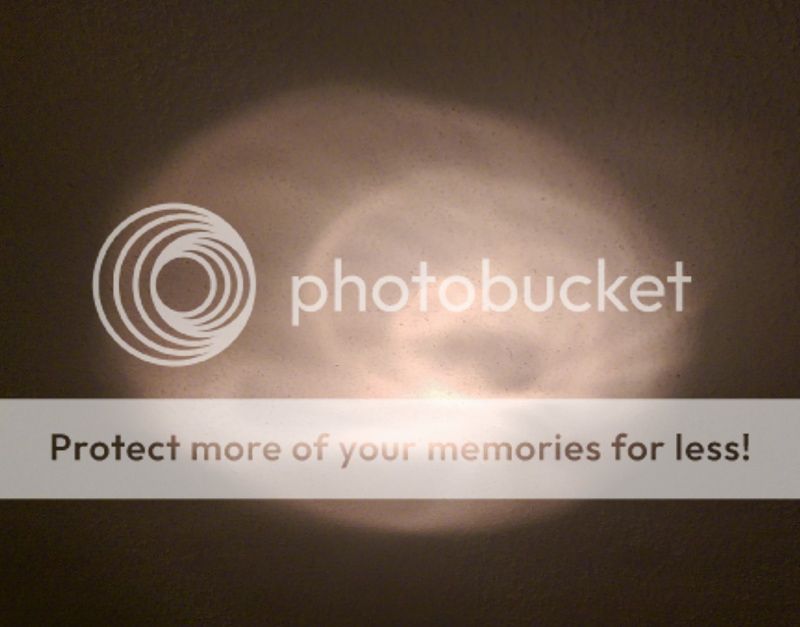Mr. Postman dropped off another jewel in the rough today. A 3 cell Burgess Range Finder to be exact.
It's a chrome body light that is light as a feather while feeling substantial enough to evoke a sense of stability. It is in great shape on the outside with very little scratching, no dents and no rust. The guts are loaded with tarnish which is typical for anything this old. There is lots of copper and brass for added weight, but durability.
It was a pleasure turning it on and nothing...until a whack to the palm made it spring to life.
Yessssss!!!
No flicker what-so-ever.
Aiming at a wall, not for some purist reasons but just for kix & giggles. It was a blast to see what happened next.
That nice under driven incan yellow feathury edges raised a smile on my face after a weird day at the office.
This is a civilian light that wouldv'e likely used by campers, hunters and folks who preferred well constructed flashlights at some point between WW I and II.
It'll have cells in it and be left near my back door for occasional use.
It's my first light made by the CF Burgess company but after spending 10 minutes checking over all those little things I figure there'll be more along the way.
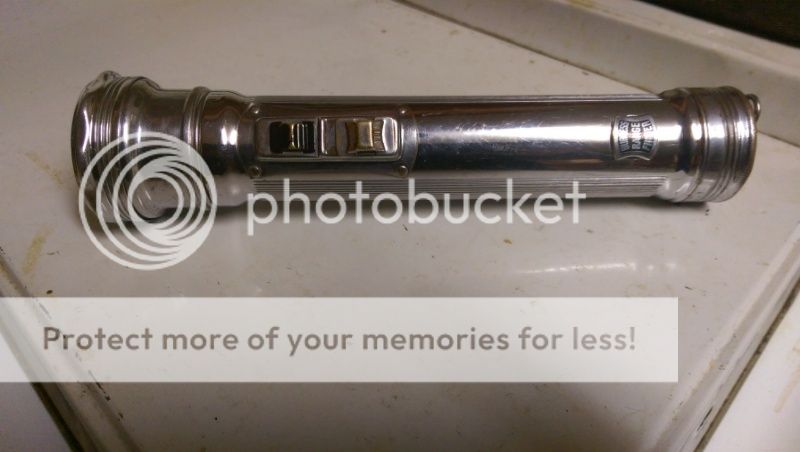
Now the details:
It's a dual switch light where one is for on/off and the other slides the lamp forward. Unlike many lights from the days of yore, this one has a lamp assembly attached to the body and not the reflector.
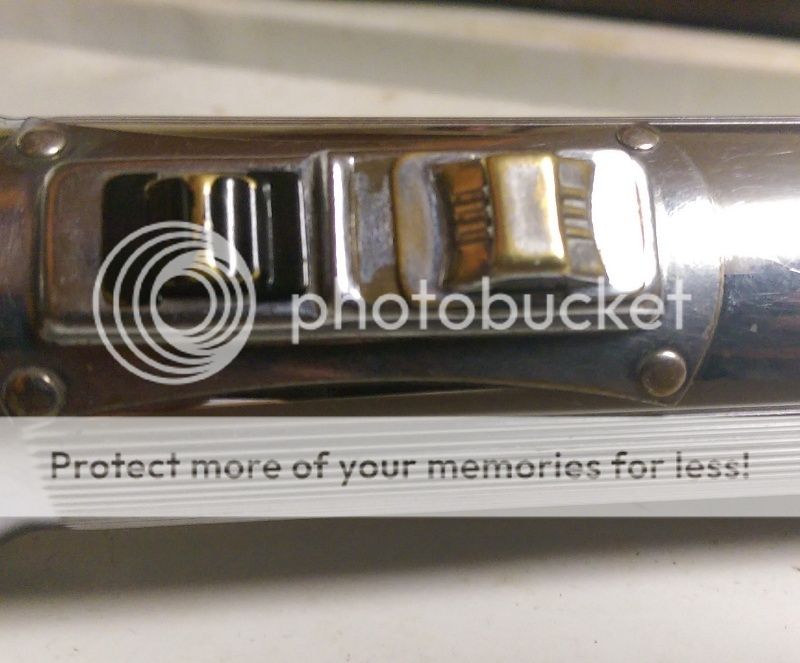
A fairly ineffective approach in todays world but probably seen as an idea with ground breaking potential...(can you say Maglite?)

The assembly slides back n forth along a pair of keepers.
It's pulled in all the way in this pic.

All the way out in this one.
Note the vertical brass keeper to the right vs a horizontal plate.
Basically what it does is change the size of the spot from pencil to wider.

Beam pulled all the way in.

Midway. Note the spot is wider.
This was my favorite.

All the way forward.
The supplied 4.5 volt 2.5 watt bulb is not very bright. Maybe 25 lumens is thrown forward of a brass reflector.


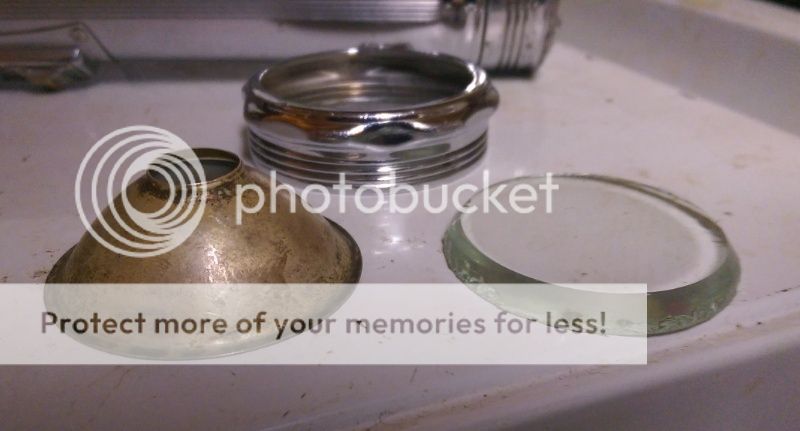
Check out how thick that lens is.
It protrudes forward of the anti-roll bezel, which lends to the spill. At the same time creating a nice ring around the edge.

The tailcap is a brass number with a copper spring and a nail hook.

The hook protruding to the side here.

One of the things I noticed was how smooth the threads are on this one. On other old lights it's an excersize in frustration to get threads started, but in this light it was a breeze to remove and replace items at both ends.
The ribbed steel shows there was a leaker at one time. My guess is it was found by the eBay seller with ancient cells.
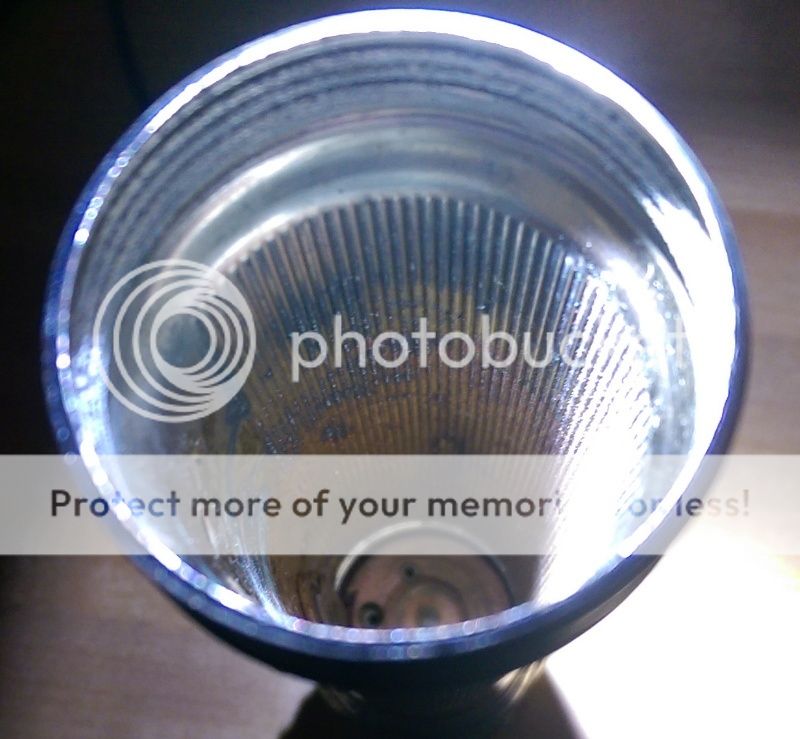
At some point I'll clean up the light inside and out so no palm whack is required to make it light all nice n consistant.
Here it is next to a Mag 2D and an old cracker tin from my youth.

It's a chrome body light that is light as a feather while feeling substantial enough to evoke a sense of stability. It is in great shape on the outside with very little scratching, no dents and no rust. The guts are loaded with tarnish which is typical for anything this old. There is lots of copper and brass for added weight, but durability.
It was a pleasure turning it on and nothing...until a whack to the palm made it spring to life.
Yessssss!!!
No flicker what-so-ever.
Aiming at a wall, not for some purist reasons but just for kix & giggles. It was a blast to see what happened next.
That nice under driven incan yellow feathury edges raised a smile on my face after a weird day at the office.
This is a civilian light that wouldv'e likely used by campers, hunters and folks who preferred well constructed flashlights at some point between WW I and II.
It'll have cells in it and be left near my back door for occasional use.
It's my first light made by the CF Burgess company but after spending 10 minutes checking over all those little things I figure there'll be more along the way.

Now the details:
It's a dual switch light where one is for on/off and the other slides the lamp forward. Unlike many lights from the days of yore, this one has a lamp assembly attached to the body and not the reflector.

A fairly ineffective approach in todays world but probably seen as an idea with ground breaking potential...(can you say Maglite?)

The assembly slides back n forth along a pair of keepers.
It's pulled in all the way in this pic.

All the way out in this one.
Note the vertical brass keeper to the right vs a horizontal plate.
Basically what it does is change the size of the spot from pencil to wider.

Beam pulled all the way in.

Midway. Note the spot is wider.
This was my favorite.

All the way forward.
The supplied 4.5 volt 2.5 watt bulb is not very bright. Maybe 25 lumens is thrown forward of a brass reflector.



Check out how thick that lens is.
It protrudes forward of the anti-roll bezel, which lends to the spill. At the same time creating a nice ring around the edge.

The tailcap is a brass number with a copper spring and a nail hook.

The hook protruding to the side here.

One of the things I noticed was how smooth the threads are on this one. On other old lights it's an excersize in frustration to get threads started, but in this light it was a breeze to remove and replace items at both ends.
The ribbed steel shows there was a leaker at one time. My guess is it was found by the eBay seller with ancient cells.

At some point I'll clean up the light inside and out so no palm whack is required to make it light all nice n consistant.
Here it is next to a Mag 2D and an old cracker tin from my youth.

Last edited:


